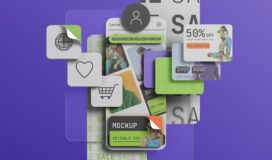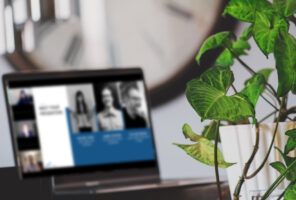How to Decide Between Product Design or UX Design Career Paths
Picture this: You’ve finished your UX/UI Bootcamp. You’re a Figma novice and doing 100 days of UI challenge to put on your Behance. You’re eyeing signing up for Figma Academy, but most importantly, you’re searching for jobs. You are connecting with people on LinkedIn, reaching out to alumni of your bootcamp.
However, you’re coming across some confusing job listings. What’s the difference between a product designer and a UX designer? Why is Indeed recommending them both? They have similar responsibilities, but your boot camp was for UX design, not product design! Can you apply for a product designer role? Should you?
When you reach this fork in the road – and it’s likely that you will – you should ask yourself the following questions:
- What parts of a product’s lifecycle do I want to be responsible for?
- Who do I want to be working “next to?”
Chew on these as we zoom out and look at product design vs. UX design careers.
Two Key Questions for Design Careers
Product designers have been known to work on physical products more so than solely digital ones. Additionally, product designers may be responsible for the entire lifecycle of a product, whereas a UX designer may only be responsible for certain parts of this same product’s development.
The reality, though, is that both positions often overlap and are even interchangeable from company to company. This is why the most important thing, especially when seeking a job in this field, is to ask yourself the following questions:
What parts of a product’s lifecycle do you want to be responsible for?
I admittedly love wireframing. If I could take the research done by someone else, inject that with the values of the product, and guide it with its overall vision, I could wireframe endlessly. This is one of the reasons why I – despite having spent years as a generalist and able to work as a product designer – refer to myself as a UX designer.
Finding out what aspects of a product you enjoy working on, early on, is a great way to help guide your search as a budding designer. Of course, you may end up in positions where you might be more of a generalist than a specialist, but take these experiences with a grain of salt; growing your empathy and skills as a designer as well as learning to work within a team is very important because of the next question you need to ask yourself:
Who do you want to be working “next to?”
Fresh out of the gate of my own bootcamp many moons ago, I took the role of a “UX Strategist” which, in the case of this company, where I was the only “UX-er," meant that I was a generalist. I handled the entire UX process from client intake all the way to development handoff, and occasionally aided with content and certain development tasks that I could take on. The experiences that I was able to take with me ultimately equipped me with a greater understanding and empathy for designers and developers that play smaller roles in the overall lifecycle of a product or a project.
An often overlooked and important skill is that of communicating to those to the “left and right” of you in the process. Being able to speak the language of those on your team who may be in different “industries” or parts can make you an incredibly valuable member of any team.
As a product designer, you may have the primary (not necessarily sole) responsibility for being the key touchpoint between different designers and developers to oversee the development of a product. A UX designer, however, may not be responsible for as much communication. That said, having the skills, knowledge, and empathy to communicate with those you’ll be handing off work to is still valuable, even if you’re not “responsible for it.”


Thriving in the Right Workplace
Though certain variables that affect your career may be out of your control, you can always position and posture yourself as the designer you want to be, and seek the right workplace context that you could potentially (and hopefully) thrive in. Because, regardless of what tasks they may have you do or what title you hold, growing in and advancing down the path of your career will likely come down to the following:
“Whether I am a product or UX designer..."
- ...am I still doing the appropriate work to empathize and vouch for my user to guide and keep my design work in check?
- ...am I making sure that I am communicating and cooperating effectively with all members of the team that will bring this project/product to a successful completion?
- ...am I making sure that I am taking true ownership over the responsibilities that have been assigned to me?
The depth and worth of these qualities will transcend whatever title and position you hold. What remains is where you want to set yourself up for success. We’ve asked ourselves, what part of a project do I want to be responsible for? And who do I want to work next to? Lastly, we must ask ourselves, what environment do I want to find myself in? Going into interviews with questions to figure out more than just what you’ll be doing, but how you’ll be doing that work will help you figure out where you really want to end up. The answers to this may vary greatly between workplaces. You may be on a small team with fast turnaround times and little-to-no check-ins. You may be on a larger team with two standups a day and developers free to ask you questions. Again, understanding what you want to be responsible for, and who you want to be working next to, can help guide even the answers to these questions.
Lastly, remember that you can’t steer a parked car. Your answers to the questions we’ve posed may change over time – and that’s okay. The core values that both product and UX designers must call upon are evergreen, and you can refine those no matter where you go. You may not find your “perfect job” the first time around, but that can even help you refine where you want to end up. As you go begin the first steps of your growing career, don’t get distracted by interchangeable titles and negligible office perks. Focus on what you want your responsibilities to be, who you want to work with, and the culture you want to find yourself a part of.


